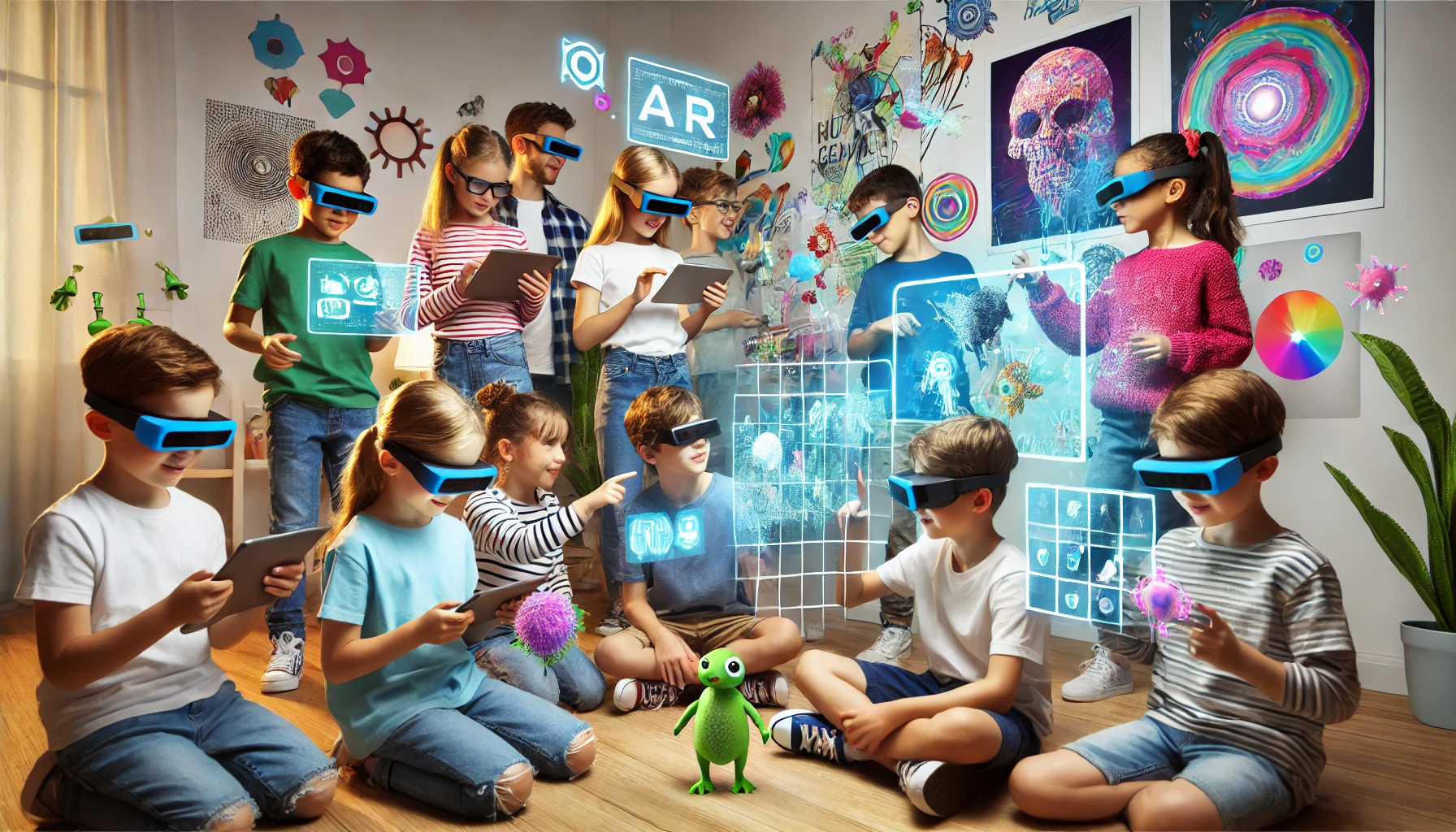How does augmented reality work?
Augmented reality (AR) is not just a flashy tech trend; it’s a powerful tool that is redefining how we interact with the world. From gaming to education, healthcare to retail, AR has moved from being a futuristic concept to a practical solution enhancing our daily experiences. By superimposing digital information over the physical world, AR creates a dynamic, immersive environment that changes how we perceive and engage with our surroundings.
An Example of AR in Action: Bringing the Digital to Life
To truly grasp the potential of augmented reality, consider one of the most popular examples—Pokémon GO. When the game launched, it became an instant cultural phenomenon, with players hunting down virtual creatures in real-world locations. What made Pokémon GO special was its ability to blend the digital with the physical. Through the lens of a smartphone, parks, streets, and landmarks were transformed into game environments, showing us how AR could turn everyday spaces into interactive experiences. But beyond the entertainment world, AR’s real magic lies in its versatility across industries.
In retail, for example, AR is helping consumers make more informed decisions by enabling them to visualize products in their real environments before buying. IKEA's AR app lets you see how that new couch would look in your living room, eliminating the guesswork and increasing purchase confidence. In education, AR is transforming the learning process by bringing lessons to life—imagine anatomy students interacting with 3D models of human organs in real time.
These examples illustrate the broad application of AR, showcasing its capacity to make abstract concepts tangible, whether in gaming, shopping, or learning.
The Three Types of Augmented Reality: Diverse Paths to Enhanced Reality
To understand AR more deeply, we need to break it down into its three main types: marker-based AR, markerless AR, and projection-based AR. Each offers a unique way of blending the digital with the physical world.
- Marker-Based AR: This type of AR relies on visual cues, or "markers," such as QR codes or images. When a device scans the marker, the corresponding digital content appears over it. This is often used in marketing or educational materials, where scanning a symbol triggers an interactive experience.
- Markerless AR: Also known as location-based AR, this type uses GPS, accelerometers, and other location-detection methods to deliver content. This is the technology behind apps like Pokémon GO, where digital objects appear in specific physical locations, allowing users to interact with them in real time.
- Projection-Based AR: Instead of using a screen, projection-based AR casts light or images onto surfaces, making it possible for users to interact with the digital elements in a more tactile way. This technology is particularly promising for industrial applications, such as in manufacturing, where real-time data can be projected directly onto machinery or workspaces.
Each type of AR serves different purposes, from interactive marketing campaigns to life-saving applications in healthcare. Understanding the different ways AR can be implemented helps to appreciate its versatility and the potential it holds for innovation across sectors.
AR vs. VR: The Cost Factor
One important consideration when choosing between AR and virtual reality (VR) is cost. AR tends to be more affordable than VR, largely because AR applications can often run on existing smartphones and tablets. VR, on the other hand, typically requires more specialized hardware, such as headsets and controllers, to create fully immersive virtual environments.
This cost efficiency makes AR an attractive option for businesses and developers looking to engage audiences without significant upfront investments. Industries like retail, real estate, and education are increasingly turning to AR because of its accessibility and lower entry barriers. And as AR technologycontinues to evolve, the gap between cost and capability narrows even further, opening doors for even more widespread adoption.

The Road Ahead: Where AR is Taking Us
Augmented reality has already made its mark on the world, but we are only scratching the surface of its potential. As AR technology becomes more advanced and more integrated into various aspects of our lives, its applications will become even more transformative.
We are moving towards a future where AR could be seamlessly integrated into everything from our car windshields to our contact lenses, overlaying useful information in real time without the need for bulky devices. Imagine navigating a new city with step-by-step directions appearing right in front of you, or doctors performing surgeries with real-time data displayed over a patient’s body. The possibilities are endless.
This convergence of the physical and digital worlds is leading us into an era where AR becomes an essential tool for solving real-world problems, enhancing human capabilities, and creating entirely new experiences that were once the stuff of science fiction.
Final Thoughts: Embracing the Future with Augmented Reality
As we stand at the crossroads of technological innovation, augmented reality is no longer a distant dream but a present reality with far-reaching implications. Its ability to blend the digital and physical worlds is revolutionizing industries, enhancing our understanding of complex concepts, and making everyday tasks more engaging and efficient.
The most exciting part? We're only at the beginning of this journey. As AR technology continues to evolve, it will open up new possibilities we have yet to imagine. Whether you’re a business looking to enhance customer engagement, an educator seeking to inspire students, or a developer eager to push the boundaries of what’s possible, augmented reality offers a wealth of opportunities to explore.
So, what’s next for AR? It’s hard to say for sure, but one thing is certain: it’s going to be a thrilling ride. If you’re curious to dive deeper into the world of augmented reality or want to explore other cutting-edge topics, don’t stop here. [Check out our other posts on our website for more insights and updates.] The future is here, and it’s augmented. Let's embrace it together.


One thought on “The Power of Augmented Reality in Our World”